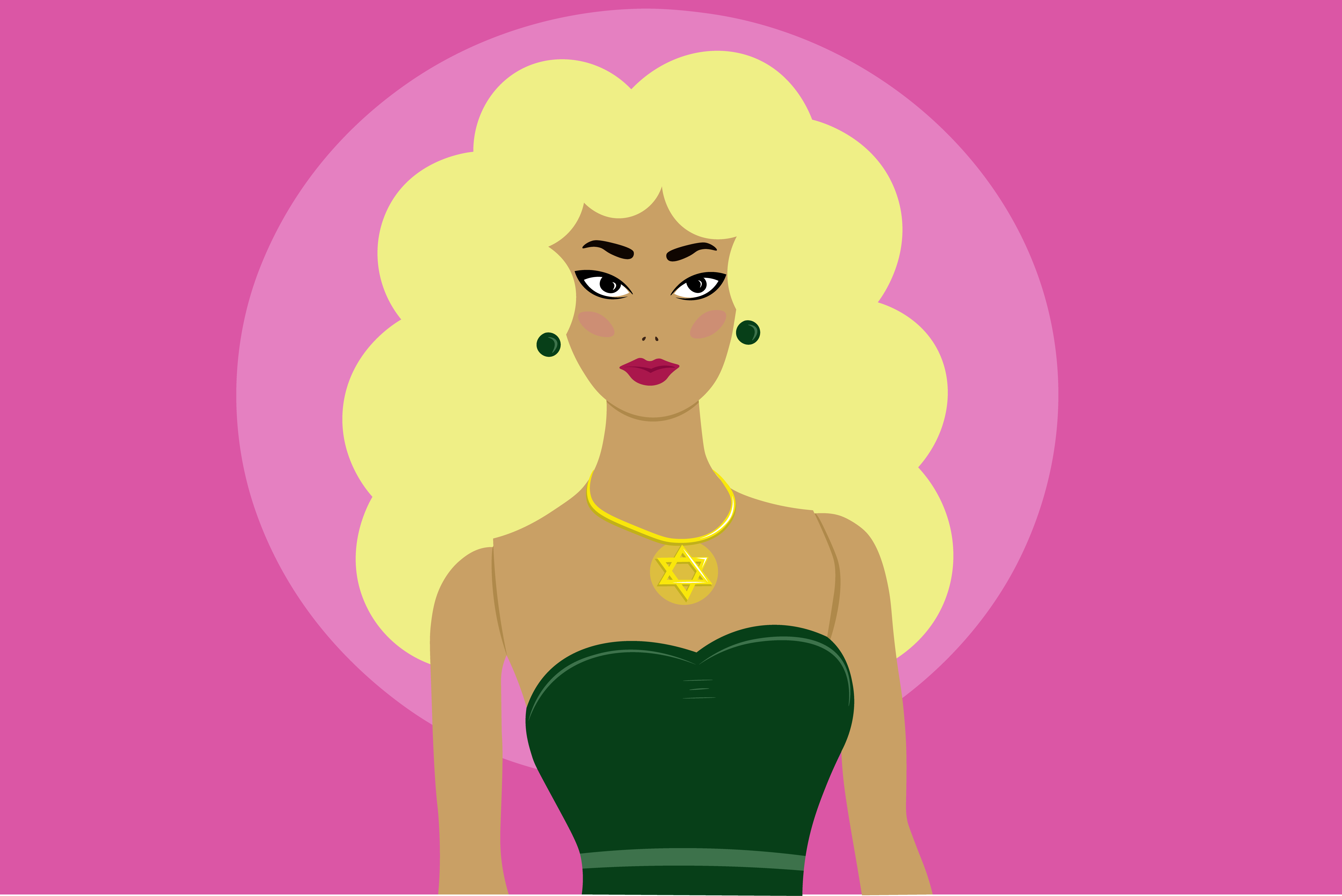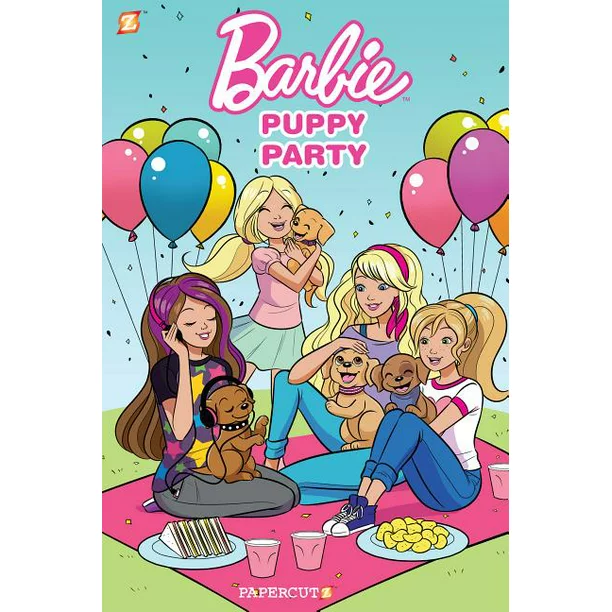
Illustration by Sivan Ellman.
The Surprising Jewish Roots of Barbie
I originally knew Barbie as a doll, a franchise, an iconic figure in many childhoods, and a career woman who wore many hats, both literally and figuratively. It wasn’t until I was tapped by the kids’ comics publisher Papercutz and Mattel to write a Barbie graphic novel that I learned about her Jewish beginnings.
Researching the history of the character while brainstorming, I found many lesser-known facts about her I could relate to. Barbie was originally created by Ruth Handler, a Jewish woman whose parents left Poland for America because of anti-Semitism, just as my family left the Pale of Settlement to escape from pogroms. She named the doll after her daughter, Barbara. Barbie is something of a Rorschach test, and Handler told Lilith’s Susan Weidman Schneider in the Spring 1994 issue that she felt inspired by paying attention to how her daughter and her daughter’s friends would play with dolls. “I listened to how they would project their future with their dolls,” she said. Because prior to Barbie only baby dolls were available to play with, Handler wanted to create a grown-up doll as well. Later in the same interview, she remarked, “A mother saw the play pattern the doll could provide for her daughter. It provides for millions and millions of little girls an important play experience; it gives a little girl the ability to dream about her future. A girl can interpret the adult world around her with this doll as a prop.” (For more on the history of Barbie, you can read Lilith fiction editor Yona Zeldis McDonough’s book: The Barbie Chronicles).
Because I was working on a graphic novel, it also got me reflecting on the history of that genre. It was interesting to note that American comic books as we know them have Jewish roots. Much has been written on Jewish-created comic book characters, like Superman or the X-Men, and how they symbolize Jewish experience as being outsiders who fight against the odds.

I knew I wanted the Barbie in my graphic novel to be ambitious and empowering, to get the job done and to also show the benefits of helping others. Because Mattel wanted a puppy theme for the graphic novel, I pitched an idea to them: have Barbie and her sisters throw a puppy party for their local shelter to get all the dogs and cats adopted. Each character would have an important role in putting the party together, and they would also branch off and find new friends in the experience. Their party would be a success, showing how kindness, hard work and sisterhood can get the job done. It also shows kids how they can get involved in important issues, animal welfare or otherwise, by taking creative action.
Learning about Barbie’s background fascinated me as I was writing the book, in part because of recent anti-Semitic experiences I’d had. Because she was created by a Jewish woman, Barbie herself has been a target of anti-Semitism. For example, the doll has been banned in Saudi Arabia, with the Saudi Committee for the Propagation of Virtue and Prevention of Vice saying, “Jewish Barbie dolls, with their revealing clothes and shameful postures, accessories and tools are a symbol of decadence to the perverted West. Let us beware of her dangers and be careful.”
On the other hand, Barbie has been a source of Jewish identity and pride. Online you can find Tefillin Barbie (covered in Lilith) holding a Torah scroll, available for purchase on Etsy. A 2005 documentary called The Tribe: An Unorthodox, Unauthorized History of the Jewish People and the Barbie Doll in About 15 Minutes looked at modern Judaism through the symbol of Barbie. This “I can do anything no matter what I get hit with” side of Barbie is what I what I found most compelling while writing. My graphic novel is just a piece of the Barbie collective cosmos, but I wanted my part to honor Handler’s original idea—to show girls that they can be anything and give them the space to do so.
Danica Davidson is the author of the Overworld Adventure series, Manga Art for Beginners and Barbie: Puppy Party.
The views and opinions expressed in this article are the author’s own and do not necessarily reflect those of Lilith Magazine.



